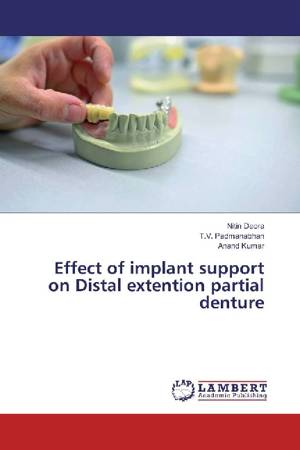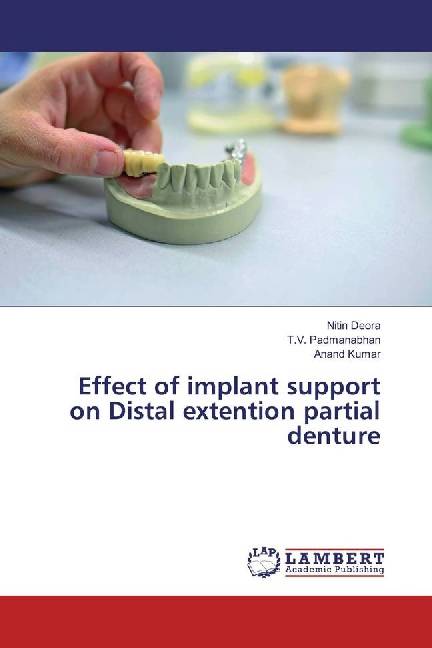
- Afhalen na 1 uur in een winkel met voorraad
- Gratis thuislevering in België vanaf € 30
- Ruim aanbod met 7 miljoen producten
- Afhalen na 1 uur in een winkel met voorraad
- Gratis thuislevering in België vanaf € 30
- Ruim aanbod met 7 miljoen producten
Zoeken
Effect of implant support on Distal extention partial denture
Nitin Deora, T. V. Padmanabhan, Anand Kumar
Paperback | Engels
€ 55,45
+ 110 punten
Omschrijving
The use of implants for the rehabilitation of partial edentulism is now a well accepted treatment modality. In the Kennedy class I and class II the traditional design of RPDs are limited in biomechanical ability to provide maximum prosthesis stability and retention. Implants can be placed distal to the most posterior tooth abutment in the arch to stabilise the prosthesis and change the location of the fulcrum, minimising the resultant rotational movement. Significantly less displacement of the implant supported removable partial denture and decreased pressure on soft tissues are observed when comparing it to a conventional prosthesis. One implant as posterior as possible will change the fulcrum and convert class I and class II situations into class III. This is more favourable condition for biomechanical reasons because of the quadrilateral configuration.
Specificaties
Betrokkenen
- Auteur(s):
- Uitgeverij:
Inhoud
- Aantal bladzijden:
- 132
- Taal:
- Engels
Eigenschappen
- Productcode (EAN):
- 9783330027978
- Uitvoering:
- Paperback
- Afmetingen:
- 150 mm x 220 mm

Alleen bij Standaard Boekhandel
+ 110 punten op je klantenkaart van Standaard Boekhandel
Beoordelingen
We publiceren alleen reviews die voldoen aan de voorwaarden voor reviews. Bekijk onze voorwaarden voor reviews.











